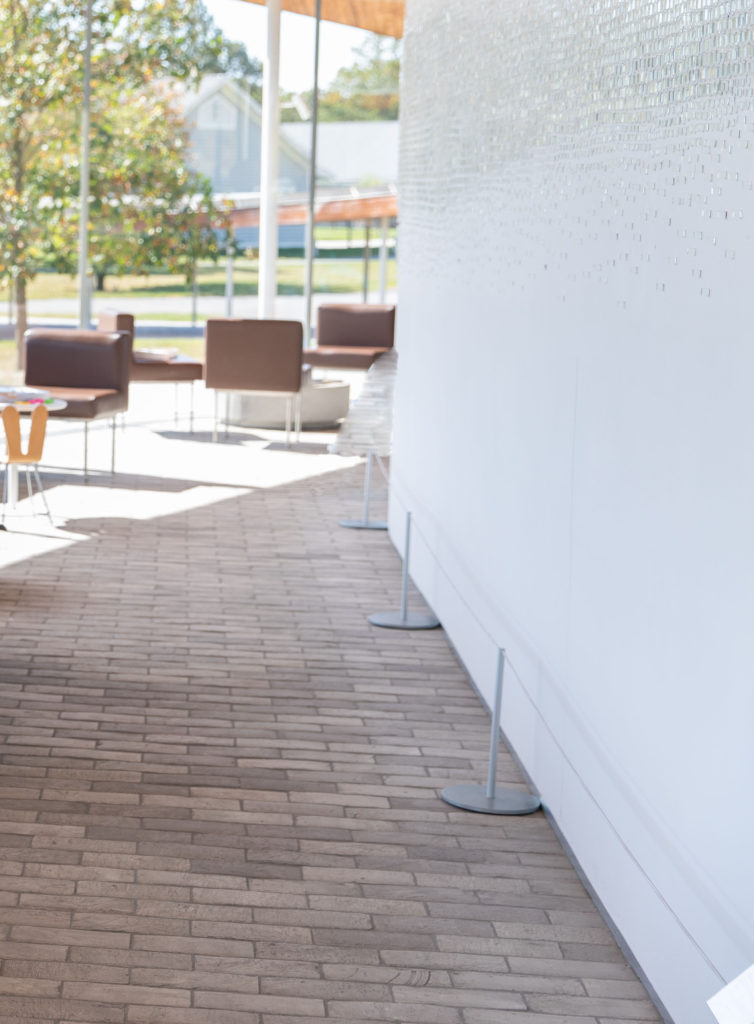Petersen Brick

Petersen Tegl has been producing bricks for more than two centuries. The Financial Times called Petersen “probably the best brickmaker in the world.” Over the past seven generations, the Petersen family, based in Denmark, have created handmade artisanal bricks by using Danish soil rich in clay to shape the bricks, which are then fired by flames and coal in an oven. The process they use ensures that the resulting bricks vary slightly in size and color – each one is unique. All of the bricks bear the fingerprints of the worker who created them, a gentle reminder of the people who worked to create each unique brick. The Petersen brickworks exports its products around the world, including the United States, Japan, Australia, Russia, and several European countries. At Grace Farms, Petersen bricks are used in the Living Room area of the Commons, to help create a warm and intimate space.
The Petersen Tegl brick is a unique building material in many ways, not only because it is an example of excellent craftsmanship, but the Danish brickmaker has sustainably sourced clay free of forced labor for 226 years. These bricks are ethically sourced and manufactured, which is particularly notable because bricks imported from around the world are often fraught with forced labor. Brick is one of the top materials used in global construction, where children and adults are likely forced to work long days to extract the clay and make bricks in hazardous conditions.
Forced labor and child labor in the brick supply chain is pervasive and problematic. The U.S. Department of Labor has listed two dozen countries that are actively engaged in using either forced or child labor in brick-making including: Argentina, Bangladesh, Bolivia, Brazil, Burma, Cambodia, China, Ecuador, Egypt, Iran, India, North Korea, Nepal, Pakistan, Paraguay, Peru, Russian, Uganda, Vietnam, and Colombia.
Of all the countries, Nepal, Pakistan, Cambodia, and India are widely cited in the press for human rights violations in this industry. In January 2021, the Central Bureau of Statistics, ILO, and UNICEF released a comprehensive report that revealed an estimated 34,593 Nepalese children between the ages of five and 17 are living in brick kilns, while over 17,000 of them are child laborers.
Brick is one of the world’s most ubiquitous building materials and more designers than ever are embracing the use of brick in their designs with custom-designed brickwork, according to The New York Times. As designers are having a “moment” with brickwork, perhaps now is the time to laud the likes of Petersen bricks and designers that use them not only for their unique look but because they were made without forced labor.
Resources:
Block Bricks Campaign Report on Employment Relationships in the Brick Industry in Nepal – UNICEF
Slavery in India’s Brick Kilns and the Payment System – Anti-Slavery International
Ending Forced Labor in Nepal’s Brick Industry Needs a Holistic Approach